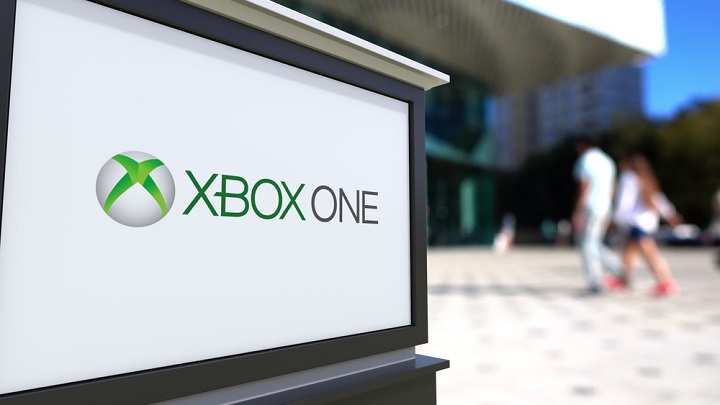The new Xbox One X console — hitting stores on November 7, 2017 — is pretty revealing regarding Microsoft Corp.’s (NASDAQ:$MSFT) acceptance of what the Xbox business is compared to what the tech company envisioned it to be in the first place.
It isn’t the first time that a product became different from what the company had thought it would be. Some drew parallels of Microsoft’s current situation with Walt Disney Co.’s (NYSE:$DIS) Epcot.
When it was still in its early planning stages back in the 1960s, Walt Disney saw Epcot to be a futuristic and carefully-designed city. It was supposed to be more than just entertainment — rather, it was to be a blueprint for a futuristic urban planning that brought the community together. Before he could see the project through, however, Disney passed away in 1966.
16 years later, Epcot finally became a reality — just not in the way Disney had first envisioned it. Instead of being a place of futurism and continued innovation, the Epcot today focuses more on the celebration of innovation and international culture. Despite being far less ambitious than Disney’s original plans, Epcot is still relatively successful, with 11.7 million visitors in 2016. Plans to expand the park was announced November 2016.
The fate of Microsoft’s Xbox franchise is a lot like what happened to Disney’s Epcot. When it first became marketed in the early 2000s, Microsoft saw Xbox as a chance to dominate home entertainment, not merely a video game console — just like how Disney saw Epcot as more than a theme park. However, unlike Disney, Microsoft didn’t realize its vision not because its creator never saw it through, but because of several outside influences. Some of these influences include, but probably were not limited to: Sony Corp.’s (NYSE:$SNE) popular PlayStation, the growing mobile game industry, and the sudden rise of smart TVs and video streaming applications.
But, like Epcot, the Xbox still remain a relatively successful part of Microsoft despite never reaching its ambitions. In the December quarter, Microsoft’s gaming revenue was $3.6 billion while its most recent March quarter was $1.9 billion. The revenue includes hardware sales, game sales, and game royalties from Xbox developers. As well, Microsoft reportedly has about 52 million active users of the Xbox Live platform. It also reported that about users spent a total of 3.9 billion hours on Xbox Live last November and December — a 23% increase annually. Xbox Live allows its users to gain streaming services; along with that, those who pay an annual fee of $60 for its Gold service can access multi-player gaming.
When compared to Sony’s more than 53 million sales for its PlayStation 4, as well as the 600 million users Apple Inc. (NASDAQ:$AAPL) currently has or the 2 billion-plus active Android users Alphabet Inc./Google (NASDAQ:$GOOGL) has, the successes of the Xbox is extremely small in comparison. However, the comparison isn’t exactly apples-to-apples. The Xbox Live is a platform targeted at solely at gaming console users, while the iOS and Android are computing platforms that can be mass-marketed to a larger variety of consumers. As such, the Xbox is simply a platform successful in its own right — even just in the market of home entertainment.
Microsoft’s new Xbox One X, with specs similar to gaming PCs set at an affordable price of $499, shows that the company has learned to stop dwelling on its past ambitions and embrace the niche the Xbox franchise had found itself in. The One X, similar to Sony’s PlayStation 4 Pro that launched last fall, was developed for game-lovers who prefer to play games at a 4K resolution on a console rather than a PC that features a Nvidia Corp. (NASDAQ:$NVDA) or Advanced Mirco Devices Inc. (NASDAQ:$AMD) GPU.
While the Xbox One X costs $100 more than the PS4 Pro, the console’s 6 teraflops (TFLOPs) of GPU performance is — thanks to a custom AMD chip that contains an 8-core, 2.3GHz. CPU. — well worth the extra money. Although the GPU performance is still below Nvidia’s most powerful PC GPUs (known to deliver 10-plus TFLOPs), it is over 40% more GPU horsepower than what the PS4 has. It is also 4-times as impressive as the GPU provided by the Xbox One S which launched last summer with a $299 starting price.
It should be noted that Microsoft made no mention of VR when it unveiled the Xbox One X at the popular E3 gaming conference on Sunday, June 11 — another sign of the tech company embracing the Xbox’s status as a simple gaming console. This is an especially surprising development, as the PS4 Pro launched at the same time as Sony’s PlayStation Virtual Reality (VR) headset. As well, Microsoft had previously teased that VR content and wireless VR headsets would be available for the One X.
Microsoft’s VR strategy for its gaming console largely differs to its PC VR strategy: the tech company is currently working with original equipment manufacturers (OEMs) like HP Inc. (NYSE:$HPQ), Dell Technologies (NYSE:$DVMT), and Lenovo (HKG:$0992) to release cheap wired VR headsets for the Microsoft’s Windows 10 PCs. It seems that Microsoft is more concerned with delivering a high-quality VR gaming experience — with wireless VR headsets rather than wired ones — when compared to its PC plans to deliver a cheaper, more mass-market focused VR experience.
This, along with the fact that Microsoft hadn’t launched a set-top Xbox — similar to the AppleTV, aimed for video streaming and casual gaming — and has less of a focus on its Kinect motion sensor — similar to the Wii by Nintendo (TYO:$7974) — shows that the tech company is longer trying to make Xbox everything for everyone. Considering its great successes in other fields like mobile and cloud productivity apps, server software, public cloud services, and the Windows platform, Microsoft can live with the mediocre successes of the Xbox franchise.
Sourced from: depositphotos/alexeynovikov










